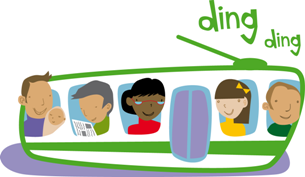 The Age is reporting that the Baillieu government has a wish list of major transport projects. Top of the list (apparently) are the East West Road and MetroOne underground rail (artist impression of CBD south Station) see DoT site for more info.
The Age is reporting that the Baillieu government has a wish list of major transport projects. Top of the list (apparently) are the East West Road and MetroOne underground rail (artist impression of CBD south Station) see DoT site for more info.What do you think should be the priority?
Here's what The Age had to say:
ROCKETING across China at 300 kilometres an hour by rail, Ted Baillieu recently did some quick mental calculations to see whether a high-speed train for Australia was viable.
Baillieu, who seems adroit when it comes to such thought experiments, concluded that likely patronage and the high construction costs would make it difficult to leverage the necessary private sector investment.
Baillieu stresses that major projects have often suffered from poor planning and project management, resulting in delays and cost blow-outs.
He is adamant his government will not be corralled into blindly rushing ahead with expensive projects just for the sake of having something to announce. So far, it hasn't.
After being stung by criticism in July for failing to submit a list of major projects to Infrastructure Australia, which makes recommendations to the federal government about funding priorities, the state government will today release its major projects wish-list.
The submission, which comes as the government nears its first anniversary, draws on the previous Labor government's (mostly unfunded) $38 billion transport blueprint, which in turn relied heavily on the 2008 options paper delivered by infrastructure adviser Sir Rod Eddington.
In other words, the latest submission has been a long time in the making. Unlike past proposals, there are no glossy maps showing potential routes, no timelines showing when various projects might be completed, and no estimates of potential costs.
The lack of flashiness, according to the government, is deliberate. The idea is to first develop a plan, then find a way of funding it, and then managing the project itself.
''It would be no leadership to set out a timetable you can't keep, it would be mis-leadership and I don't intend to embark on that,'' Baillieu told The Age. ''So it is step-by-step, plan, fund the planning, step-by-step, take the project through.''
There are two key elements to the plan.
First, an 18-kilometre inner urban road connecting the Eastern Freeway and the Western Ring Road, with intermediate links to the Tullamarine Freeway, the Port of Melbourne and Geelong Road. Second, a metro rail tunnel connecting the northern and south-eastern lines, with five new stations along the way.
The problem - which is not unique to Victoria - is finding the cash. As Baillieu notes, which ever way you dress it up, the money has to come from somewhere. The question is, what is the most efficient way of paying?
The options are resorting to debt, running down the budget surplus or selling assets to finance the project.
In the case of the east-west link, financing could be a profound challenge. When Infrastructure Australia last reported on its priorities in July, it delivered a blunt warning that it was ''very unlikely'' to support state government proposals for new freeways unless they were tolled.
Infrastructure Australia national co-ordinator Michael Deegan said state governments needed to realise that ''someone has to pay for major projects'', either by taking on debt, selling assets or using tollways or some other user-pays system.
''The old days of there being a magic pudding in Canberra are no longer,'' Deegan said.
Infrastructure Australia has also been cautious on the merits of the east-west road tunnel itself, saying it should be considered only if there was joint funding from the Victorian government and a focus on container traffic from the Port of Melbourne.
The thinking is that the link would only be viable if it is a tollway with various access points into the city to induce the necessary traffic.
As Labor found out, the politics of this are horrible. As a rough rule of thumb, every $1 billion of investment needs to generate about $100 million a year to get the private sector interested. That means a lot of extra cars in and around the city.
The government's second proposal, for Melbourne Metro, which was also first proposed in Eddington's 2008 study, would be more likely to be viable.
According to Baillieu, the new five-station link would move an extra 25,000 passengers an hour, with 140,000 passengers travelling each morning. Infrastructure Australia, which identified the project as ''ready to proceed'', concluded that every $1 spent on construction would generate an economic return of $1.30.
The ultimate challenge will be delivering in the not-too-distant future as Melbourne's population continues to swell.


No comments:
Post a Comment